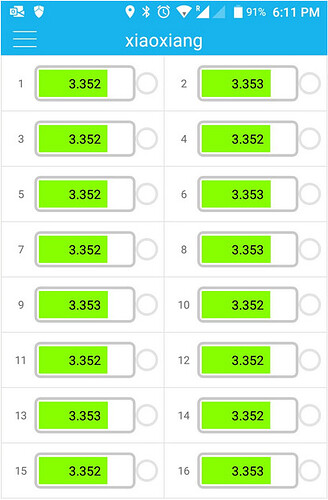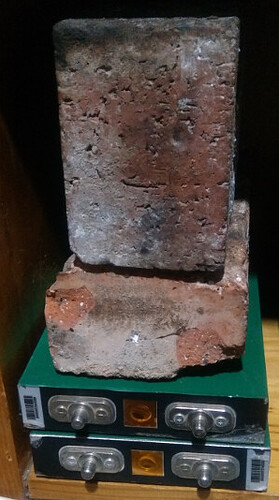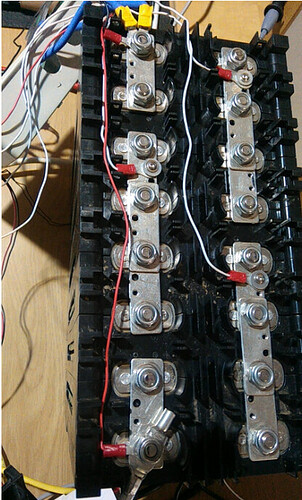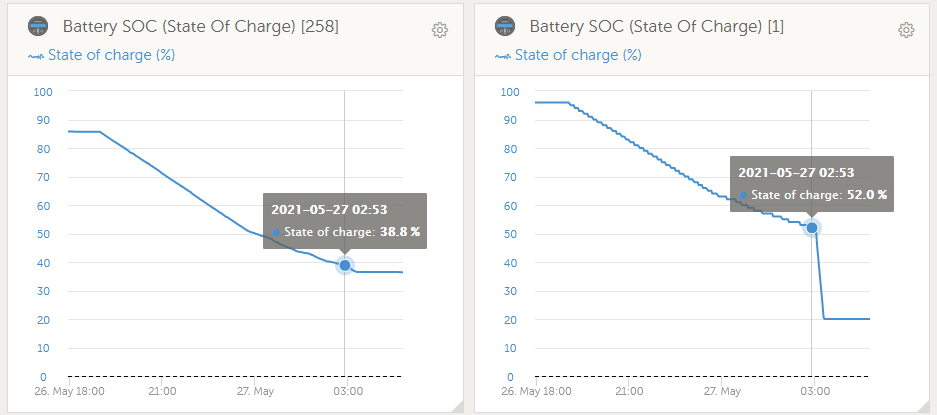I really don’t get the problem here. Many farmers run a (cement) dam at 3/4 level… sometimes because it has a crack higher up and they don’t want it to leak  The pump still has to produce the same amount of water per day, since the pump’s output must necessarily equal the water consumption of the animals (plus a bit of evaporation, but you get my point). How high you keep the level in the dam only really affects production numbers on the first day (the day on which you fill it up)…
The pump still has to produce the same amount of water per day, since the pump’s output must necessarily equal the water consumption of the animals (plus a bit of evaporation, but you get my point). How high you keep the level in the dam only really affects production numbers on the first day (the day on which you fill it up)…
Running the batteries at a lower voltage is like that proverbial farm dam. If you’re getting lower numbers… you really need to ask yourself what happened/happens to all that energy when you use the higher numbers…
I buy fully into what Phil is “selling”, makes complete sense ito longevity of a bank.
What you are leaving out of the equation, I not only have to fill the dam carefully, cause whilst filling it, I need to run the irrigation too.
Dropping the overall voltages to accommodate slower battery charging is affecting the 4.2kw array’s max production.
Each time I adjust the charge voltages lower, the production reduces too = more Eskom.
Unless I am missing something blatantly here?
@TheTerribleTriplet, I’m with @plonkster on this one.
As I said, I think once you are in normal operation mode, it’ll all smooth out.
To borrow the analogy, you’ve now set a lower level in your dam, but your leak and usage (load) will have to allow the water level to drop to that level first. That may take a while as there is water going into the dam at the same time.
@TheTerribleTriplet
Regarding, the 3.35V charging video, the cells only reach about 90% charge, which very well be where someone wants to take them. At 3.4V they charge fully, given enough time. Someone in the comments stated that below 3.37V they will never reach full charge. My next question to @plonkster will clue you in as to why I like that voltage.
Incidentally, @plonkster, I wanted to ask you:
A multi can charge up to 64V, how spot-on is that 64V limit?
The reason I ask is 3.37V * 19 is 64.03V, there is no wriggle room, but a 19S bank is doable if a Multi can do what it says on the tin.
Hi, Not to derail the Cell Bulging, but how doable is a 18S or 19S setup? Im getting 18 Cells, and will run them 3.4V. How accurate is the Victron readings higher up?
IM just riding on @Phil.g00 question.
18S allows a bit of wriggle room with the Mult’s charging capability and to my mind plenty doable.
19S is relying on the Multi basically being spot on because it’s only really doable at the Multi’s charging voltage limit.
On the other hand say the Multi can only attain 63.65V, well you can reach 90% charge.(@3.35V/cell), no damage done and sometimes recommended as being better for the cells in the long run. Bear in mind this would be 90% of the bank but, not too bad because you have an extra cell in the bank to compensate.
1 Like
EXACTLY where I want to head but only with A grade cells.
I run between SOC of 30% - 90%, but end of day the batts are mostly @ 100% SOC, for evening use.
My experiences, non-scientific:
3.5v x 16 = 56v = full panel production during peak demands. Better have balanced cells!!!
3.3v x 16 = 52.8v = dam filling and irrigating = resulted in Eskom usage.
Upped from 3.3v to 3.3875 x 16 = 54.2v = least cell imbalance from cells 3 and 4 and production was acceptable.
3.37 x 16 = 53.92v = 0.28v lower, recon it is a “not here nor there” on production. As long as Cell 3 and 4 behaves and I don’t use more Eskom.
@Phil.g00 what do you see on your production if you drop/increase the charge volts under DVCC?
Do you see a “huge” difference?
I don’t know. It can handle over 70V without blowing up… so probably fairly spot-on.
2 Likes
I am talking about what I am going to with a new system I am going to build.
The present systems I have aren’t comparable, because I have LA’s and independent Outback MPPT’s that I set at higher voltage that force the Quattro’s to bleed off AC power to export to another upstream load. It is a totally different arrangement and not comparable to what I want to do next.
1 Like
0.001v difference, on 95% SOC, using 54v and 60amps.
Soon as I start discharging, cell 4 drops faster, BMV and BMS … ag nou ja.
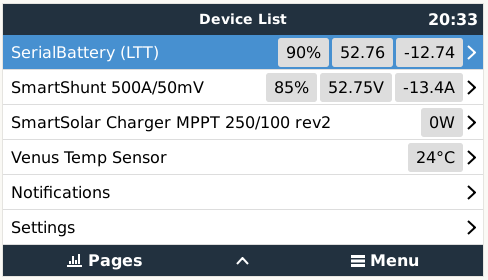
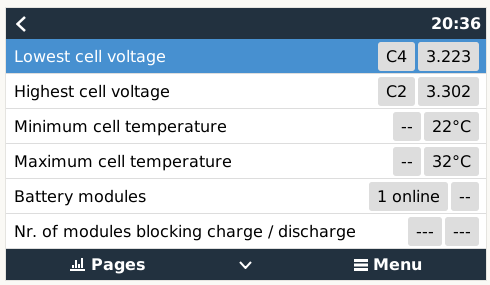
On the 2nd hand 2nd Life cells, that also bulged, want to see if this trick works … 
Bulge much better already.
Must say, it is fun.
Also doubled up on my 12v bank just because …
Klits mense … dit tick my af!!!
BMV links, BMS regs …
When the BMS and BMV is again in sync, like they where for MONTHS, then I will be happy again.
The new cells must just arrive …
Ek verstaan jou frustrasie! Dit sal my mal maak.
1 Like
That sudden drop from just above 50%… if I had to guess, one of the cells dropped rapidly in voltage and the BMS drastically adjusted its estimate based on that. This is a perfect example of how the BMS uses that extra information to make a (tecnically better!) estimate.
One way to deal with that is to set the Amp-hour capacity lower. Quite clearly you have about half or so of the actual capacity you think you have (based on that low cell).
1 Like
TTT disables my low SOC discharge current limits. It’s ment to limit large current draws on low SOC (most likely what caused the sudden drop here) but it would have kicked in only from 35%
If it was still enabled the SOC would still have dropped, but perhaps not by that much and the low cell would recover faster.
@TheTerribleTriplet Show us the min/max cell voltage graph and AC Consumtion along with the BMS SOC one.
I upgraded, so did not change this like last time.
Graphs for same period as SOC one above …
Does the SOC drop correlate to the drop to 3.15V ?
Jip … Cell 4 my bet … therein the NEED for the new cells to arrive.
Once the cell is out I can fix it …
![]() The pump still has to produce the same amount of water per day, since the pump’s output must necessarily equal the water consumption of the animals (plus a bit of evaporation, but you get my point). How high you keep the level in the dam only really affects production numbers on the first day (the day on which you fill it up)…
The pump still has to produce the same amount of water per day, since the pump’s output must necessarily equal the water consumption of the animals (plus a bit of evaporation, but you get my point). How high you keep the level in the dam only really affects production numbers on the first day (the day on which you fill it up)…